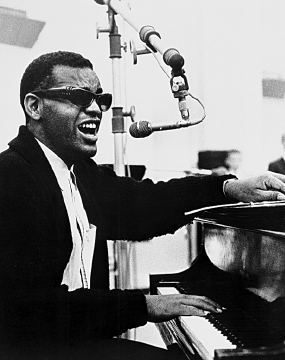Rock and Roll Embattled
Printed Page 141
Rock’s blurring of racial and other lines alarmed enough Americans that performers and producers alike worried that fans would begin defecting. They used various tactics to get people to accept the music. Cleveland deejay Alan Freed played original R&B recordings from the race charts and black versions of early rock on his program, while Philadelphia deejay Dick Clark took a different tactic—playing white artists’ cover versions of black music. Still, problems persisted that further eroded rock’s acceptance. These included black artists’ frustration with being undermined by white cover music, payola scandals signaling corruption in the industry, and censorship by officials convinced that rock turned wholesome young people into juvenile delinquents.

White Cover Music Undermines Black Artists
Despite rock’s ability to blend black and white culture and musical styles, racial tensions continued to simmer in the rock-music industry. These tensions developed in part from white musicians’ covering black artists’ work to capitalize on successful songs from the R&B race charts and transform them into hits on the white pop charts. Often, white producers would give cowriting credit to white performers like Elvis Presley (who never wrote songs himself) for the tunes they covered. Many producers also bought the rights to potential hits from black songwriters, who seldom saw a penny in royalties or received songwriting credit.
By 1955, R&B hits regularly crossed over to the pop charts, but for a time the white cover versions were more popular and profitable. For example, Pat Boone’s cover of Fats Domino’s “Ain’t That a Shame” shot to No. 1 and stayed on the Top 40’s pop chart for twenty weeks. Domino’s original made it only to No. 10. A turning point, however, came in 1962, when Ray Charles covered “I Can’t Stop Loving You,” a 1958 country song by the Grand Old Opry’s Don Gibson. This marked the first time that a black artist, covering a white artist’s song, had notched a No. 1 pop hit.
Fear of Delinquents Fuels Censorship
One particularly difficult battle rock faced was the perception among mainstream adults that the music caused juvenile delinquency. Such delinquency was statistically on the rise in the 1950s, owing to contributing factors such as parental neglect, the rising consumer culture, and the burgeoning youth population after World War II. But adults sought an easier culprit to blame. It was far simpler to point the finger at rock—especially artists who blatantly defied rules governing proper behavior. Authorities responded by censoring rock lyrics.
Rattled by this and other developments, the U.S. recording industry decided it needed a makeover. To protect the enormous profits the new music had been generating, record companies began practicing some censorship of their own. In the early 1960s, the industry introduced a new generation of clean-cut white singers, including Frankie Avalon, Connie Francis, Ricky Nelson, Lesley Gore, and Fabian. Rock’s explosive violations of racial, class, and other boundaries gave way to simpler generation-gap problems, and the music—for a time—developed a milder reputation.